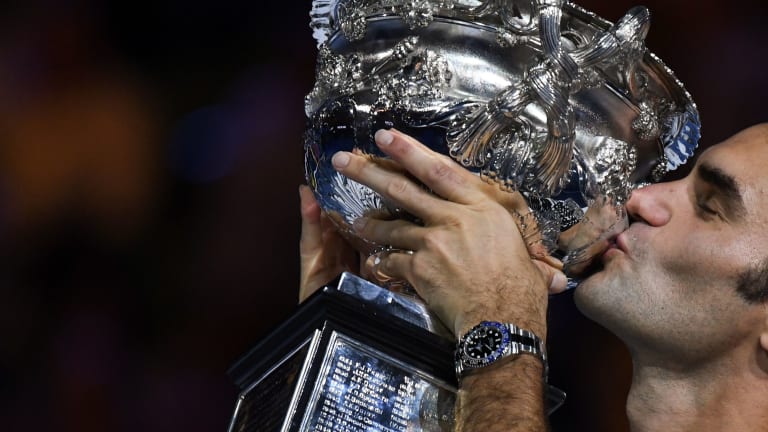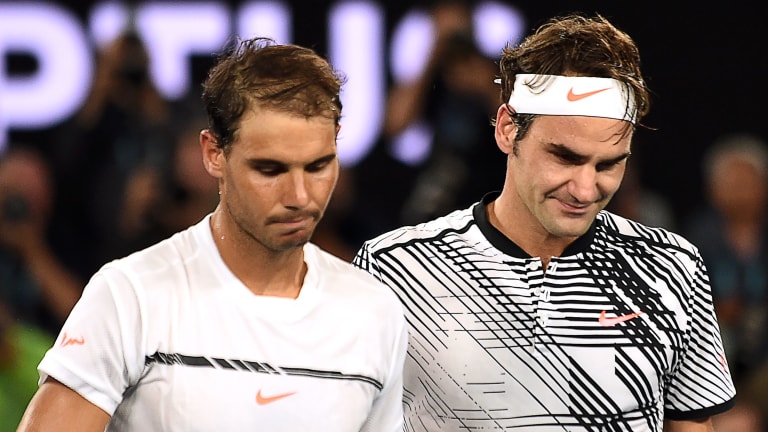“It all started for me here,” Federer said after the match. “I played the qualies here in '99, the juniors in '98. Won my first match maybe against Michael Chang here back in 2000. I go way back.
“When you win down here, the journey home is not a problem. When you lose, it's just brutal. That's why I feel very fortunate tonight.”
Emerging from a medical timeout, Federer was made to battle from the brink of a 2-4 deficit; returning at deuce, he countered a barrage of Nadal forehands to suddenly connect with a brilliant backhand, foreshadowing his run through the next four games.
The dominant stretch gave way to a tense ending as the Swiss fended off a pair of break points serving for the match and withstood multiple Hawkeye challenges to at last claim an 18th major title, 6–4, 3–6, 6–1, 3–6, 6–3.
“Rafa definitely has been very particular in my career. I think he made me a better player. Him and a couple more players have done the most to do that to me because the way his game stacks up with me, it's a tricky one. I've said that openly. It remains for me the ultimate challenge to play against him. So, it's definitely very special.
“The magnitude of this match is going to feel different. I can't compare this one to any other one except for maybe the French Open in '09. I waited for the French Open, I tried, I fought. I tried again and failed. Eventually I made it. This feels similar.”

